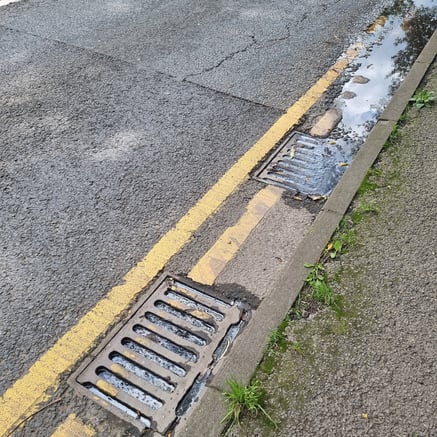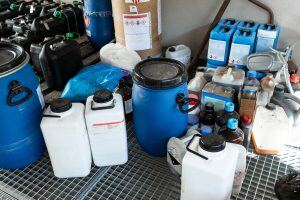When it comes to managing spill risks, stopping a potential spill at source would be the ideal...
Protecting the Pathway
We have explored opportunities to stop a spill at the source, which should always be the first stage, in order to reduce the likelihood of a spill occurring. Unfortunately it may not be possible to completely prevent an accidental spill from happening. So we need to assess which pathways are available for a spillage to reach a receptor, and put in control measures to protect them.
How do we identify a pathway? 
Using the sources that you've already documented, assess the potential pathways they may take once spilt.
Be cautious at this point not to assume any secondary containment measures will mitigate a spill and protect the pathway. We often hear "that area is bunded so it's not a concern" however we know that in practice a secondary containment system may fail, for example if the bund has excess fluid in from rain, flooding or firewater.
Some example pathways include;
- Drains
- Through soil to groundwater
- Through the air
- Across hard surfaces
- Effluent waste
- Through permeable surfaces
Utilise your site drainage map at this stage to determine where your drains are on site and where they lead to. You can visualise the route a spill may take, or try using a small amount of water to determine this. Alternatively if you have a high risk site undertaking a spill mapping exercise will give you a clearer picture.
Once you're confident you know the potential pathways for water pollution from your site, you need to implement the most effective (and cost effective) control measures. Typical solutions would be;
- Spill Kits
- Drain Covers
- Leak Diverters
- Barriers
- Interceptor Tanks
- Drain Closure Devices
After we've decided upon the most suitable control measures to protect the pathway it's a good idea to share this with your operators who would be responsible for implementing them in the time of need. Use your emergency response plan and carry out training to detail the control measures you've implemented, and who will be responsible in each scenario and make sure this is regularly reviewed and amended appropriately.
What happens if I can't control a pathway?
As we did with the source of the spills, if they cannot be prevented or controls put into place to reduce the risks, it is critical you control the receptor, in order to prevent harm to people and the environment.
Read our article on receptors for more information and guidance on how to protect them.
For support with specific queries relating to your site and the fluids utilised, contact our team for more information, or to arrange a free, no obligation spill survey to discuss potential hazards.



.jpg?height=200&name=10%20Drains%20not%20adequately%20checked%20or%20protected%20(1).jpg)